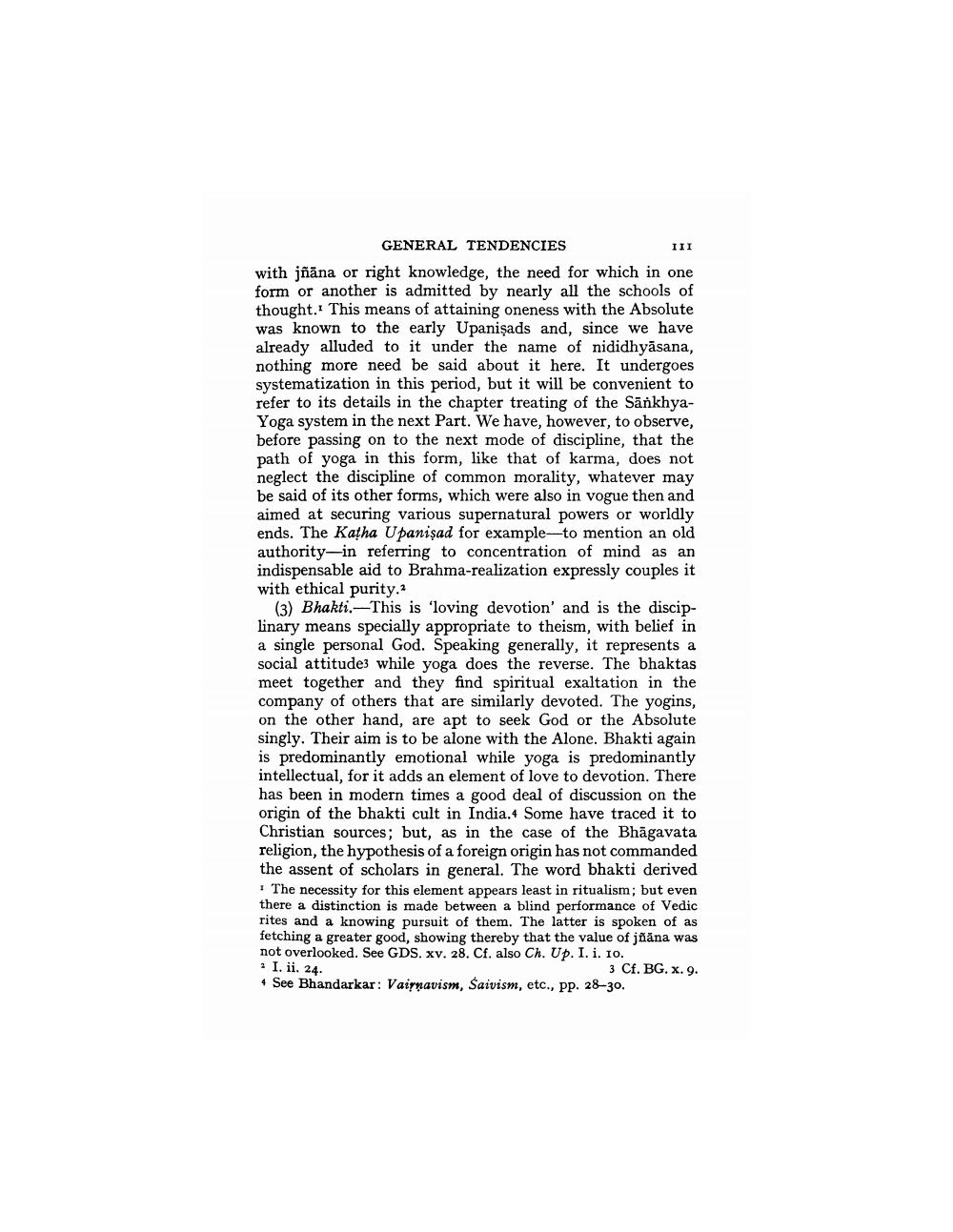________________
GENERAL TENDENCIES
III with jñāna or right knowledge, the need for which in one form or another is admitted by nearly all the schools of thought. This means of attaining oneness with the Absolute was known to the early Upanişads and, since we have already alluded to it under the name of nididhyāsana, nothing more need be said about it here. It undergoes systematization in this period, but it will be convenient to refer to its details in the chapter treating of the SankhyaYoga system in the next Part. We have, however, to observe, before passing on to the next mode of discipline, that the path of yoga in this form, like that of karma, does not neglect the discipline of common morality, whatever may be said of its other forms, which were also in vogue then and aimed at securing various supernatural powers or worldly ends. The Katha Upanişad for example-to mention an old authority-in referring to concentration of mind as an indispensable aid to Brahma-realization expressly couples it with ethical purity.2
(3) Bhakti. This is loving devotion' and is the disciplinary means specially appropriate to theism, with belief in a single personal God. Speaking generally, it represents a social attitudes while yoga does the reverse. The bhaktas meet together and they find spiritual exaltation in the company of others that are similarly devoted. The yogins, on the other hand, are apt to seek God or the Absolute singly. Their aim is to be alone with the Alone. Bhakti again is predominantly emotional while yoga is predominantly intellectual, for it adds an element of love to devotion. There has been in modern times a good deal of discussion on the origin of the bhakti cult in India.4 Some have traced it to Christian sources; but, as in the case of the Bhāgavata religion, the hypothesis of a foreign origin has not commanded the assent of scholars in general. The word bhakti derived
The necessity for this element appears least in ritualism; but even there a distinction is made between a blind performance of Vedic rites and a knowing pursuit of them. The latter is spoken of as fetching a greater good, showing thereby that the value of jñāna was not overlooked. See GDS. xv. 28. Cf. also Ch. Up. I. i. 10. · I. ii. 24.
3 Cf. BG. X. 9. See Bhandarkar: Vairnavism, Saivism, etc., pp. 28-30.




